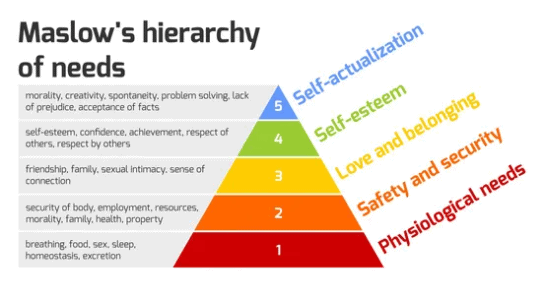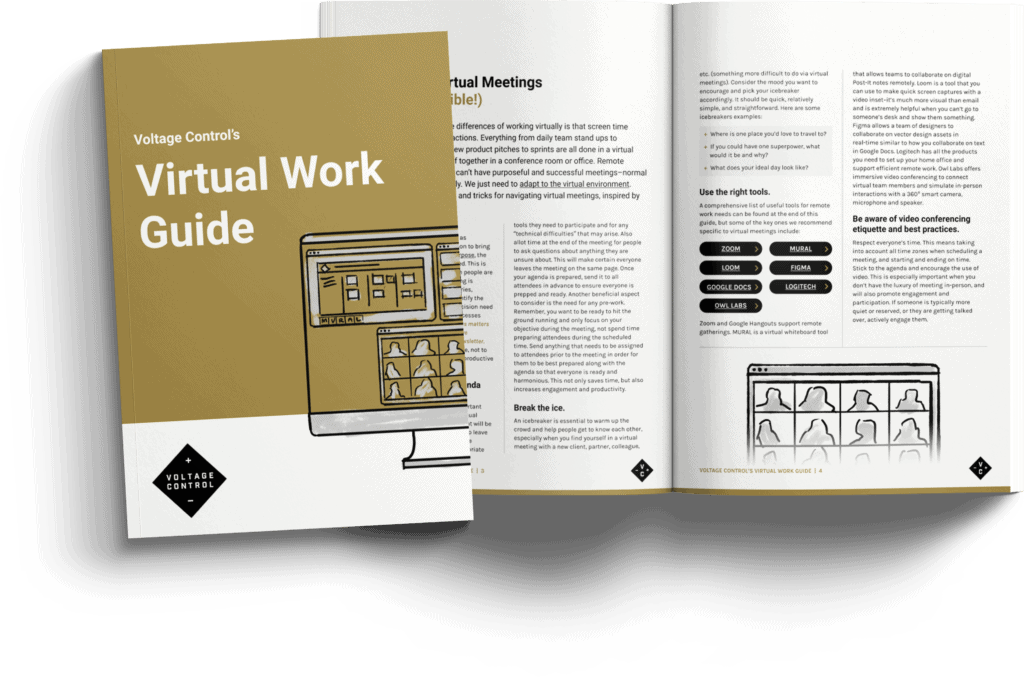If you follow the thread of good group work, you’ll find that it always leads back to good connection; better outcomes are driven when people can relate to each other. In other words, the stronger your team connection, the better work you’ll do together. According to a study by FastTrack360, over 71% of business leaders and executives say that employee engagement is critical to their company’s success. The study also found that companies with a high employee engagement rate are 22% more profitable.
Genuine connection is unequivocally essential to business success. However, the shifting businesses landscape poses a challenge for maintaining company connection and collaboration. Of the companies transitioning into the future of hybrid work, 32% of surveyed companies said that maintaining culture was one of their biggest concerns, while 19% also stated that collaborating effectively was also a concern.
The ability for people to relate to one another is influenced by the quality of communication and sense of belonging and inclusivity that exists within a team. These factors are inherently more difficult to strengthen and maintain with a remote team. Yes, there is technology that exists to keep us connected, but nothing can replace the relatedness we feel when connecting with others in the same physical space.
It is this sentiment that inspired us to work with Van Lai-DuMone, founder of worksmART advantage, to create a remote work version of her successful in-person Yarn Weave activity. Van created the activity to build a more meaningful connection amongst team members in a workshop so that they could then work more effectively together; relating first on a human level positively translates to the work that is done. Let’s take a look at Van’s original Yarn Weave activity and how we worked together to create a remote work version.
Yarn Weave Activity
Beginnings
In an in-person workshop that Van facilitated, a group of 12 people stood in a circle and picked cards with different images on them from the center of the room. A volunteer started by sharing the card they chose, their personal story or connection with it, and why they chose it. This first volunteer was given the end of a roll of yarn to hold. The next volunteer who felt the share resonated with them raised their hand, was given the yarn string to connect with the first person and told the group why it resonated with them. They then shared their image, why they connected with it, and chose it. The next volunteer raised their hand if they felt the shared story resonated with them, they were given the yarn to hold, and the pattern continued until everyone had presented their chosen card to the group. The end result was a fantastic web of connection.

One young man in his 20’s picked a photo of a car. He shared that he picked the car because he likes to restore classic cars. Across the room, an older woman on the same team enthusiastically raised her hand and shouted that she loves restoring classic cars too! It’s moments like this – where uncommon connections are made that have a lasting effect on building personal relationships in a workplace setting.
Why it Matters
Ever heard of Maslow’s hierarchy of needs? Abraham Maslow was an American psychologist who theorized human decision-making is influenced by an underlined hierarchy of needs. In the 1940s he outlined the 5 “core needs” every human has that form the foundation of behavioral motivation. The needs were presented in a pyramid shape with the most basic needs at the bottom and higher-level needs at the top:
- Psychological needs
- Safety needs
- Love and belonging needs
- Esteem needs
- Self-actualization needs

The theory explained that a person can only transcend to the higher levels of the pyramid once their basic needs are first suitably met.
Maslow’s theory is supported by the concept of the Yarn Weave activity. The connection exercise allows the group to attend to some of each participant’s foundational needs to make sure they are addressed before expecting the team to be attentive to more creative and productive pursuits. There is also great power in the ability for participants to visually see the connection between them and the rest of the group with the use of the yarn.

“A change of perspective is worth 80 IQ points.” – Alan Kay
It’s important to remember that intellectual capacities aren’t innate, they can be dramatically changed by shifts in our perspective. We can consciously develop strategies, like using the Yarn Weave activity, to shift our perspective so we can better relate to and work with one another.
The need for connection with remote teams
70% of remote workers feel left out, according to a report by Igloo. This disconnect is preventing good ideas from coming to fruition in business and stifling innovation. People must first feel connected on a personal level to flourish in business together.
In talking to Van about her intriguing Yarn Weave activity, we discovered that it was essential to create a similar experience for the virtual landscape to offer remote teams the opportunity to grow deep connections. So we collaborated and came up with a virtual adaption in MURAL–a virtual whiteboard tool that allows distributed teams to work together in real-time, visually. The Yarn Weave Connections Exercise template captures the essence of the in-person activity and makes it accessible for anyone anywhere to implement. Instead of standing in a circle with other participants, each person places their name in a circle of picture frames that surround different images in the center of the board. The activity operates the same as in-person, as a volunteer starts, shares, and another volunteer reacts to a personal connection they feel. Instead of passing around a ball of yarn, participants are connected by dragging an arrow, connected to an image of a ball of yarn. The end result is a powerful visual and metaphysical connection among all participants.
When to use Yarn Weave
Whenever you feel that your team needs to establish a stronger connection, Yarn Weave is a great idea. The activity is beneficial for:
- Teams that have never worked together before
- Teams that are feeling disconnected
- Improving group development
- Establishing a deeper bond with teams, bringing them together
The activity can be effective if used before creative/collaborative work, as bonds can be leveraged for deeper collaboration. It’s also a powerful tool to implement if you’re noticing that your team is having difficulty getting things done on an energetic level; is everyone attuned to the same frequency? The overall energy of the team needs to be aligned, both emotionally and personally, before all participants can be aligned on work logistics. Just like Maslow’s hierarchy of needs, if basic needs are not met, great work can not be accomplished.
How to use Yarn Weave for different group sizes
The standard template holds space for 10 people, however, it can be scaled up or down. You can add more spots for frames in the MURAL template. Keep in mind that this activity is a deeper dive; make sure to do it when you have time to invest in fostering a deeper team connection. The strength of the Yarn Weave activity is in the genuine connections that are made, allowing a natural flow of conversation and relation amongst the team; connections breed more connections. Therefore, note that the more people you have, the more time it will take.
If you have 20+ people, consider adding constraints to monitor time. Some examples could include:
- Establish a share time boundary. Ex: share your connection, chosen card, and associated story in 60 sec
- Set format constraints. Ex: have participants share via Haiku. It can be a fun way to limit time without seeming so rigid as a time constraint
- Limit connections. Ex: limit 3 connections per person who shares. If more than 3 people raise their hands to connect, ask those who feel the connection is not as strong to put their hand down, focusing on the strongest connections
- Monitor sharing time overall so no one is left out; ensure certain people don’t dominate the activity
Implement the Yarn Weave activity as often as needed to help your team be at its best. We’d advise not to do this activity on a weekly basis because it’s more involved. Rather, we suggest you implement it as you feel it’s needed.
If you’re in need of a quick tune-up to align your team, rather than a deep dive, try these templates:
People come first, business comes second. When every person on your team feels that their needs are met and that they have a meaningful connection with their teammates, it breeds great results. Intentionally share and build connections with your team to allow ideas to flow freely and create exceptional work together.
Learn to facilitate innovation with our Facilitator Certification
This program helps you master the game-changing skills to become the go-to facilitator in your work.




